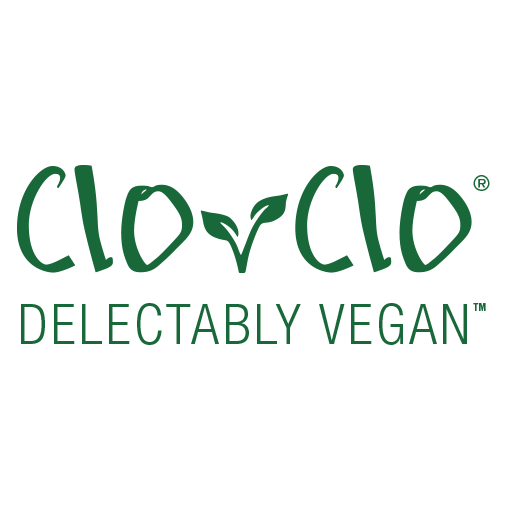Raising a Healthy Vegan Kid
When it comes to raising a healthy vegan kid, the challenges often aren’t so much nutritional as they are social. Raise your kid vegan, and you’ll hear everyone’s opinions and advice about it, whether you ask for them or not. And even within your own family unit, you’ll need to consider how to talk to your kids about why they’re vegan—whether it be for their health, the environment, animals, or all of the above—and how to properly approach their nutrition.
Lifehacker.com spoke with health and culinary experts (several of whom are vegan parents themselves) to get the lowdown on what you need to know to raise a healthy vegan kid. Here’s what they had to say:
Sort Through the Health Data
Generally speaking, plant-based diets are thought to offer protection from the most prevalent chronic diseases—but the potential benefits for kids aren’t only long-term. “Many of the common allergens—namely, fish, shellfish, dairy, and eggs—are naturally omitted on a plant-based diet,” The Plant-Based Dietitian Julieanna Hever (MS, RD, CPT) says. If you have a child with allergies, know that a vegan diet is a totally legitimate way to go.
The Academy of Nutrition and Dietetics agrees and states in its position paper on vegetarian diets that appropriately planned vegan diets “are healthful, nutritionally adequate, and may provide health benefits for the prevention and treatment of certain diseases.” It adds that a vegan diet is appropriate for all stages of the life cycle, including pregnancy, lactation, infancy, childhood, and adolescence, and is suitable for athletes.
Supplement B12
A kid on a well-balanced vegan diet can be as healthy or healthier than any other kid. The only supplement a balanced vegan needs is vitamin B12. But if you have a picky eater or want to be sure to cover your bases, a vegan multi-vitamin also can’t hurt, Hever says.
If you’re breastfeeding and are vegan yourself, the CDC and ADA recommend supplementing B12, as well. Dr. Klaper suggests supplementing your diet with 500 mcg of methylcobalamin (a form of B12) five to seven times per week and 300 mg of (algae-derived) DHA per day in order to make sure you’re getting enough Omega-3s.
Have a Good Response Ready
One of the most common questions vegans get is, where do you get your protein? If you’re raising your kids vegan, you’ll definitely want to have a good response ready.
Here are your two main points: A well-balanced plant-based diet has all the protein you need, and most people in the U.S.—the vast majority of people—get more than the recommended daily allowance (RDA) of protein, but the same number of people get less than the RDA of fiber. By feeding your kids a well-balanced plant-based diet, you ensure they get enough plant-based protein and fiber (not to mention a bunch of other wonderful nutrients).
Here’s a shortlist of vegan protein sources that should come in handy: beans, lentils, soy milk, tofu, tempeh, seitan, vegan meat products, peanut butter (and other nut butters), nuts, pumpkin seeds, edamame, quinoa, and oats.
To give you an idea, one cup of soybeans contains 28.5 grams of protein (roughly the same amount as you’d get in 4 oz of red meat or half a chicken breast), while other beans tend to have around 15 grams per cup. A cup of oatmeal has 4 grams of protein, while two tablespoons of peanut butter have 8 grams. So long as they’re eating a variety of these foods, you don’t need to overdo it. According to national dietary guidelines, a child aged 1-3 should get 13 grams of protein a day; a 4-8-year-old, 19 grams; 9-13-year-old, 34 grams; and a teenager between 46-52 grams.
So what does a balanced vegan diet look like otherwise? According to this Permanente Journal from 2016, adults should have 5+ servings of vegetables, 2-4 servings of fruit, 6-11 servings of whole grains, 2-3 servings of legumes, 1-2 ounces of nuts, and 1-3 tablespoons of seeds like chia and hemp a day. Depending on the age and appetite of your child, you can adjust that ratio accordingly.
Involve Kids Whenever Possible
It’s important to set healthy eating habits early and to make children feel involved in the kitchen and connected to their food. Work together to grow a garden, shop with them at local farmers’ markets, and have your child participate in selecting, shopping for, and cooking the recipes you make. The more they feel a part of the process, the less likely they are to rebel against what you feed them—this is true for kids and food whether you’re a family of vegans, omnivores, or anything in between.
“I get them excited about food by cooking with them and growing vegetables in the garden,” says vegan chef Sepi Kashanian. “They want to taste the salad they made themselves.”
Plant-based doctor Michael Klaper suggests that kids’ earliest snacks should be simple—things like carrot and apple slices and broccoli florets, lightly steamed at first, then raw. “If you don’t introduce them to junk foods, they won’t develop a taste for them,” he says, adding that it’s key to set the example. “With kids, the recorder is always on, and it’s important they see their parents eat the same healthy foods that they are told to eat.”
Don’t Assume Certain Foods Are Too Advanced
In that same vein, if you don’t want to have a picky eater on your hands, you’ll be better off introducing your kids to all the same foods you eat as early as possible. Kashanian says she mostly cooks for her daughter the way she would for herself, using plenty of spices, garlic, and onion. Get them exposed and habituated to every vegetable there is as early as possible, and don’t assume they won’t like spinach, kale, or Brussels sprouts.
“If you start your child off seeing all sorts of different foods in the house, and on the whole family’s plate, then it becomes normal to incorporate these foods into their diets,” Engel adds.
Be Patient with Picky Eating
If you do face picky eating, try to remember that almost every kid goes through it, no matter their diet. To make food extra fun, utilize the rainbow of colors in a plant-based diet with recipes like fruit kabobs or rainbow Buddha bowls.
“We don’t make our kids eat their vegetables to get to dessert, because that can reinforce the idea that veggies are the gross stuff you put up with to get to the prize at the end of the meal,” Engel says. “We just present it in small amounts and ask a few times if they’d like to try.” And if they don’t want to try? It’s your call whether you prefer a tough-love approach, but you can always fall back on picky-proof options like PB&Js, vegan nuggets and burgers, and of course, smoothies.
Learn Easy Swaps for Their Favorites
There’s a saying vegan like: “Anything you can eat, I can eat vegan.” And it’s true. There are so many substitutes and ways to veganize common dishes that your kids will never have to go without their favorite foods (even if they subsist on mac and cheese, pizza, or yogurt). Check out this article for simple vegan swaps, this guide to healthy vegan eating, this Trader Joe’s shopping list, and these vegan hacks, and know you can get free live coaching and nutrition consultation at ChooseVeg.com. Vegan recipe sites like Bosh, Vegan Richa, Vegan Yack Attack, and Minimalist Baker are also excellent resources for simple and fun recipe ideas.
Have Quick Go-To Meals
While there are lots of good vegans microwaveable and packaged meals out there, you’ll want to have some quick go-to meals you can whip up yourself. Keep your pantry stocked with plenty of beans, tempeh, pasta, tortillas, frozen veggies, and even pre-cooked rice, and you’ll never be left wondering what to do. You can also check out this simple formula for building a healthy vegan bowl. You’ll want to aim for one grain (rice, quinoa, pasta, etc), a few different-colored vegetables, and a legume (tofu, beans, peanuts) in every meal. Quick meals can include pasta with lots of veggies and cannellini beans, quick bean and veggie burritos with vegan cheese, or stir fry with veggies, tofu, and rice noodles.
Keep an Open Dialogue
Don’t assume kids can’t handle the truth. In fact, the more you help them understand why your family chooses to be vegan, the more they’ll be able to make informed decisions at birthday parties and school.
Whatever your particular reasons for choosing a plant-based diet—you’re raising your child vegan because of a dairy allergy, other health reasons, or environmental or animal rights-related concerns—you’re going to want to explain that. Emphasize that if their friends have different diets, that isn’t a moral failing on their part. They should have an informed idea of why your family eats a plant-based diet, and be able to talk to friends about it without being judgmental. It’s also important to let them know that if they’re being teased at school for being vegan or asked questions they don’t know the answer to, they can always come and talk to you about it.
It can also help to introduce them to other vegans their age, whenever possible. There are lots of vegan kids and teens who are outspoken about why they choose not to eat animals.
Try Clo-Clo’s Vegan Pizzas!
You’re gonna LOVE Clo-Clo’s Vegan Frozen Pizzas. We offer Cheese, Margherita, Meatless Italian Sausage, Meatless Pepperoni, Mediterranean, and plain pizza crusts for a build your own experience. Plus, our pizza is kid-approved…just ask Chloe! Find a SPROUTS store near you to purchase.
Source: LifeHacker





No Comments